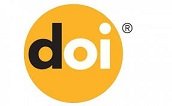The Pre-service Science Teachers’ Mental Models for Concept of Atoms and Learning Difficulties
1292
433
Abstract
The purpose of this study is to reveal the preservice science teachers' difficulties about the concept of atoms. The data was collected from two different sources: The Draw an Atom Test (DAAT) and face-to-face interviews. Draw an atom test (DAAT) were administered to the 142 science teacher candidates. To elaborate the results, the researcher conducted face-to-face interviews with 15 students. The students’ drawings were analyzed and grouped into eight different categories. These categories were: 1- Rutherford atomic model, 2- Bohr atomic model, 3- Probability orbit model, 4- Probability model, 5- Electronium model, 6- Electronium orbit model, 7- Orbital model, and 8- Wave orbit model. Based on the results, the Bohr atomic model was the most drawn model by the students while probability atomic model, the wave orbit model, and Electronium orbit model were the least drawn. Moreover, the study demonstrated that the pre-service science teachers had difficulty in grasping atom, electron cloud, and orbital concepts as well as the atom models, the probable nature of quantum physics, and wave-particle duality.
Full Text:
PDFRefbacks
- There are currently no refbacks.
Copyright (c) 2017 International Journal of Education in Mathematics, Science and Technology







International Journal of Education in Mathematics, Science and Technology (IJEMST)

This work is licensed under a Creative Commons Attribution-NonCommercial-ShareAlike 4.0 International License.
ISSN: 2147-611X (Online)
